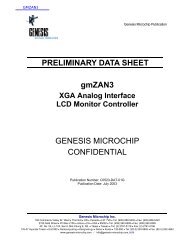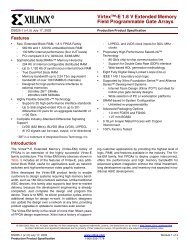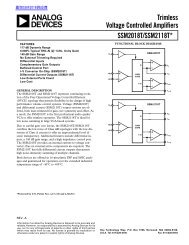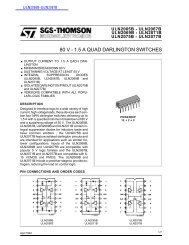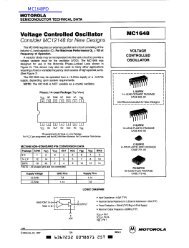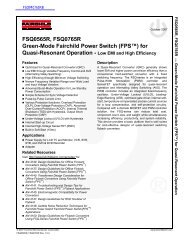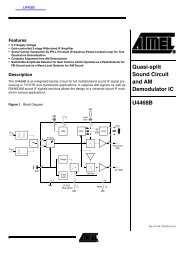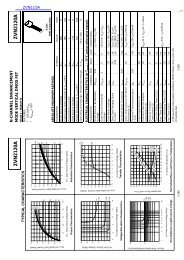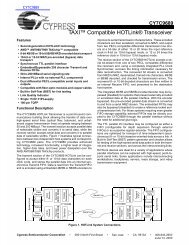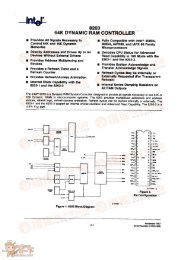You also want an ePaper? Increase the reach of your titles
YUMPU automatically turns print PDFs into web optimized ePapers that Google loves.
Numonyx <strong>Wireless</strong> <strong>Flash</strong> <strong>Memory</strong> (<strong>W30</strong>)<br />
• To lock-down a locked or unlocked block, write the Lock-Down Block command<br />
sequence.<br />
• If a block was set to locked-down, then later changed to unlocked, issue the Lockdown<br />
command before asserting WP#, to put that block back in the locked-down<br />
state.<br />
• When WP# is deasserted, locked-down blocks change to the locked state, and can<br />
then be unlocked using the Unlock Block command.<br />
13.1.4 Block Lock Status<br />
The lock status of every block can be read in read identifier mode.<br />
Note: To enter this mode, issue the Read Identifier command to the flash device.<br />
Subsequent reads at BBA + 02h output the lock status of that block. For example, to<br />
read the block lock status of block 10, the address sent to the flash device must be<br />
50002h (for a top-parameter device).<br />
The lowest two data bits of the read data, DQ1 and DQ0, represent the lock status.<br />
• DQ0 indicates the block lock status. This bit is set using the Lock Block command<br />
and cleared using the Block Unlock command. It is also set when entering the lockdown<br />
state.<br />
• DQ1 indicates lock-down status and is set using the Lock-Down command.<br />
The lock-down status bit cannot be cleared by software–only by a flash device reset or<br />
power-down. See Table 25.<br />
Table 25: Write Protection Truth Table<br />
VPP WP# RST# Write Protection<br />
X X VIL Device is inaccessible<br />
VIL X VIH Word program and block erase are prohibited<br />
X VIL VIH All lock-down blocks are locked<br />
X VIH VIH All lock-down blocks can be unlocked<br />
13.1.5 Lock During Erase Suspend<br />
Block lock configurations can be performed during an erase suspend operation, using<br />
the standard locking command sequences to unlock, lock, or lock-down a block. This<br />
feature is useful when another block requires immediate updating.<br />
To change block locking during an erase operation:<br />
1. Write the Erase Suspend command.<br />
2. Check SR[6] to determine that the erase operation has suspended.<br />
3. Write the desired lock command sequence to a block.<br />
The lock status changes.<br />
4. After completing lock, unlock, read, or program operations, resume the erase<br />
operation with the Erase Resume command (D0h).<br />
If a block is locked or locked-down during a suspended erase of the same block, the<br />
locking status bits change immediately. When the erase operation resumes, it<br />
completes normally.<br />
November 2007 Datasheet<br />
Order Number: 290702-13 73



